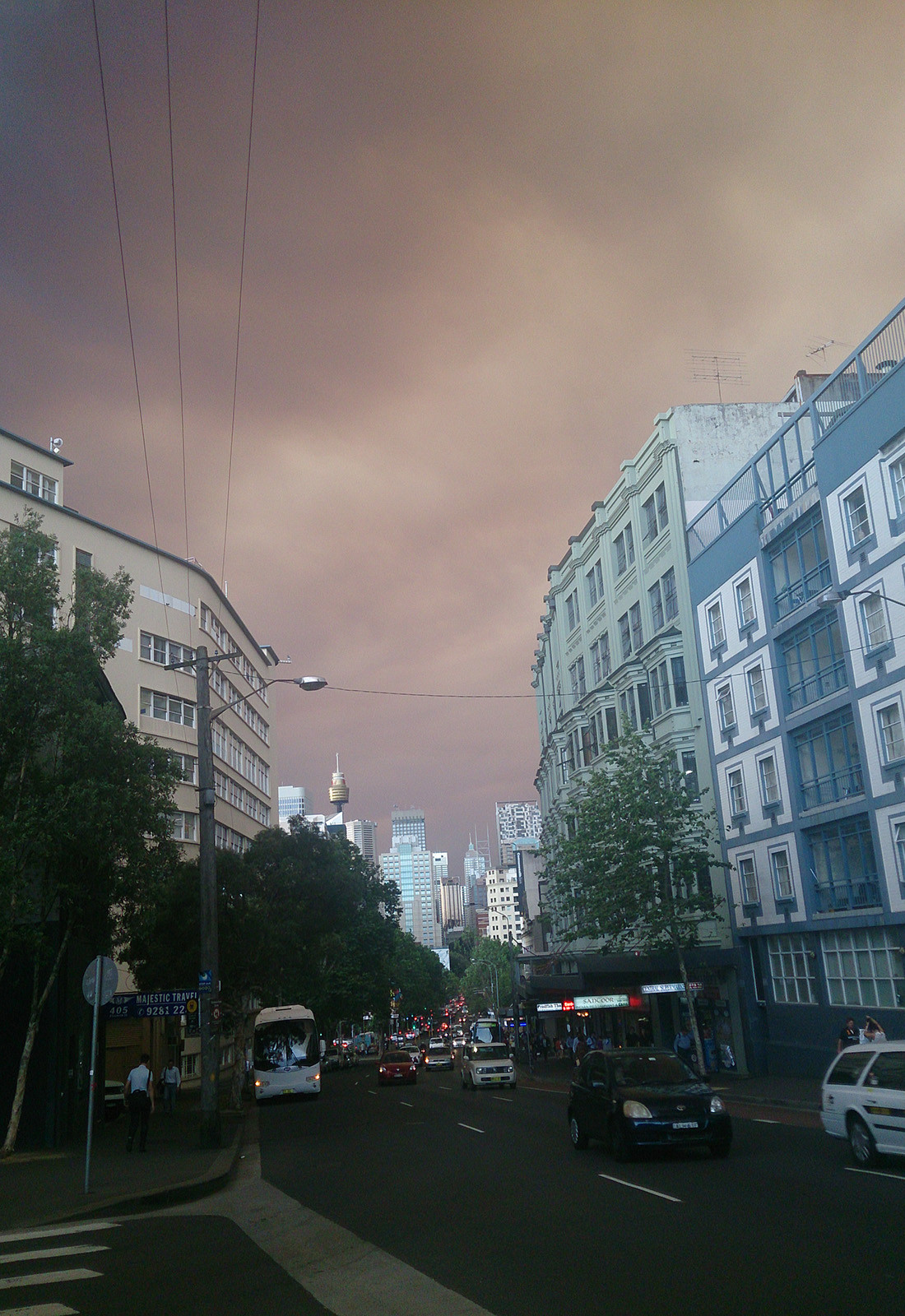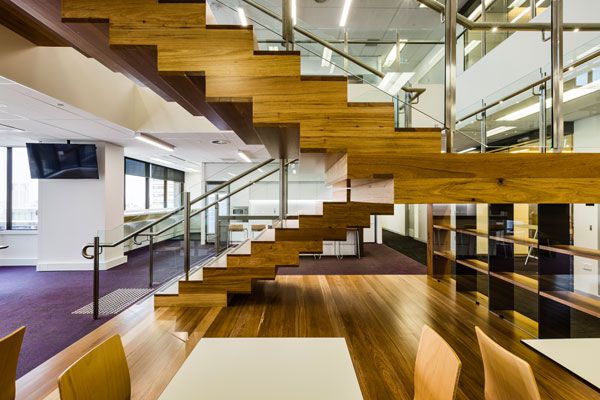With our current lack of climate change foresight in building and city design, get ready for a future of summer nights sleeping in the laundry, Australia!

December 18th, 2019
As Australia heads to what appears likely to be a new, terrifyingly-briefly-held temperature record across the mainland the thoughts of a sleepless nation turn to “why is this goddamn room so goddamn hot?” as we wring another flannel over our steaming faces and pray for the refreshingly cold embrace of the grave.
But it’s a good question, although one to which we might have given a bit more thought before filling our cities with buildings that largely seek to absorb heat rather than repel it.

Australia is slightly better prepared for a future of extreme temperatures than, say, Germany where residents are discovering that buildings designed to retain warmth through bitter winters become steamy heat sheds in 40 degree summer peaks.
Our land might be wide and brown and girt by sea, but our cities are small and bunched up in the least-arid bits of it. And clumping all your buildings together locally increases heat in the same way that forests reduce it, because it turns out that hot things are hot – and the design of a lot of new residential developments suggest that mainstream architects have an inexplicably pro-heat agenda.

Maybe they’re just really into building saunas
Part of the problem is that fewer and fewer of us can afford to build sprawling Federation-style homes ringed with verandahs and featuring wide, shuttered windows able to be flung open to let any hint of a breeze wander through, much less Coober Pedy-style underground burrows-slash-supervillain lairs. Instead we’re creating what city planners have dubbed Urban Heat Islands, which is also the name of my future new favourite band.
And it’s not just a high-development issue for CBDs: our suburbs have seen a proliferation of those very particular type of utilitarian, vaguely industrial cheek-by-jowl townhouse nests populating new developments, unadorned with eaves or shades or other such temperature-reducing fripperies. And thus they are especially good at absorbing heat, which is perfect if you aspire to roast chickens on the floor of your north-facing bedroom of a summer’s day.

It’s like having a second kitchen.
So how are other nations going about dealing with this looming problem for human habitation? Well, for the most part, the same way that Australia’s dealing with climate change generally: a few boutique operators start the running with innovative designs while those with powers of regulation assiduously ignore the issue altogether. In the US, despite a decade of devastating hurricanes, storms, floods, extreme snowfalls other extreme weather events, builders, designers and regulators are all assuming that future weather will look like the weather of the past – which, if nothing else, is adorably optimistic. At least, until New York’s overfilled subways start spilling grey, rat-filled water through the boroughs.
Then again, local councils in Australia have been literally legislating sea level rise out of existence in their building guidelines, because they fear that acknowledging that certain places will definitely be washed away would affect the value of the property there. Which is true, admittedly, in much the same way that Pompeii City Council evidently downplayed the whole “active volcano” thing to ratepayers in case it spooked the market.

Turns out being buried in tons of ash can have effects on property values
But let’s not worry about all that now: just stretch out and relax on the bathroom floor, jammed between the shower stall and the toilet, and get some shuteye. This is how summers work now.
If you loved this, we think you’d might like this feature piece on the fight for affordable housing. Join our digital community and get weekly inspiration straight to your inbox.
A searchable and comprehensive guide for specifying leading products and their suppliers
Keep up to date with the latest and greatest from our industry BFF's!

Savage Design’s approach to understanding the relationship between design concepts and user experience, particularly with metalwork, transcends traditional boundaries, blending timeless craftsmanship with digital innovation to create enduring elegance in objects, furnishings, and door furniture.

Suitable for applications ranging from schools and retail outlets to computer rooms and X-ray suites, Palettone comes in two varieties and a choice of more than fifty colours.

The Sub-Zero Wolf showrooms in Sydney and Melbourne provide a creative experience unlike any other. Now showcasing all-new product ranges, the showrooms present a unique perspective on the future of kitchens, homes and lifestyles.

Channelling the enchanting ambience of the Caffè Greco in Rome, Budapest’s historic Gerbeaud, and Grossi Florentino in Melbourne, Ross Didier’s new collection evokes the designer’s affinity for café experience, while delivering refined seating for contemporary hospitality interiors.

The Queensland University of Technology’s Creative Industries Precinct suggests that collaboration should come easy.

Innovative concept designs from the annual Electrolux Design Lab competition are currently on showcase at the Good Design Lounge presented by Electrolux, as part of VIVID Sydney, from 23 May – 9 June 2014.

The relocation for NSW Treasury meant significant change, namely, moving from a static environment to an agile one. CSM supplied much of the office furniture, but how did this help make this major transition a success?
indesignlive.com now has a twitter feed. You now have three easy ways to subscribe to all our news through rss, twitter and our weekly newsletter. All you need to do to sign up to any of these is to take a quick scroll to the top of any page and in the top right hand […]
The internet never sleeps! Here's the stuff you might have missed

Symbolising a commitment to cultural preservation and timeless design, Powerhouse Castle Hill invites visitors into the stories behind the artefacts in a diverse range of educational and cultural activities.

From the trailblazer of Spanish industrial design comes a new collection of recycled rugs – a powerful exploration of the concept of waste, a keen celebration of imperfection, and a new underfoot symbol of responsible design.

In the pursuit of an uplifting synergy between the inner world and the surrounding environment, internationally acclaimed Interior Architect and Designer Lorena Gaxiola transform the vibration of the auspicious number ‘8’ into mesmerising artistry alongside the Feltex design team, brought to you by GH Commercial.